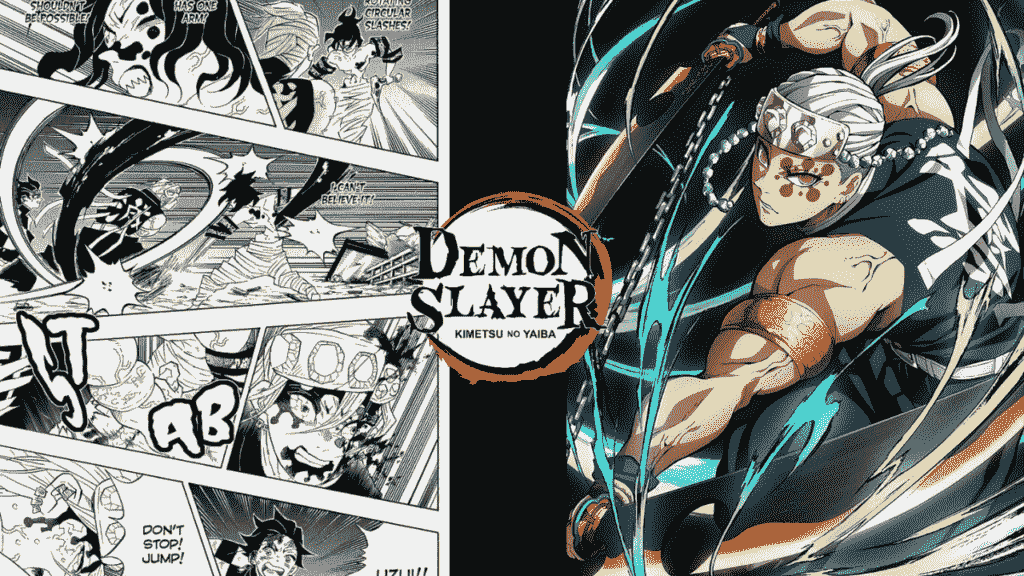Table of Contents

Introduction
“Demon Slayer: Kimetsu no Yaiba” manga and anime created by Koyoharu Gotouge has become famous worldwide due to its stunning animation and storyline. The manga has enjoyed widespread acclaim, but its animation made it reach to new heights.
The adaptation of “Demon Slayer: Kimetsu no Yaiba” from manga to anime offers a fascinating study in how different mediums can enhance and reshape a story.
While the manga, presents a meticulously crafted narrative through its art and sequential storytelling, the anime adaptation, produced by Ufotable, brings the story to life with dynamic visuals, fluid animation, and an evocative soundtrack.
Not to mention the fact that, unlike popular adaptations like Tokyo Ghoul and Horimiya, the Demon Slayer anime is faithfully adapting the original manga. In spite of these genuine and reasonable caveats, the Demon Slayer manga is still absolutely worth investing in. Here is a detailed review of Demon Slayer Manga Vs Anime.
Art Style And Animation
One of the most noticeable difference between anime and manga is its art style and animation. The art style of “Demon Slayer: Kimetsu no Yaiba” manga, is characterized by its striking combination of detailed linework and fluid, expressive character designs.
The manga features intricate backgrounds and dynamic action sequences that convey both the beauty and brutality of its world.
The anime adaptation of “Demon Slayer: Kimetsu no Yaiba” produced by Ufotable, is renowned for its breathtaking art style and animation quality. It elevates the manga’s visuals through fluid motion, vibrant colors, and intricate 3D effects that bring the action scenes to life.
Key scenes, such as the breathtaking “Water Breathing” techniques and the visually striking “Infinity Train” arc, showcase the anime’s ability to enhance the action.
Storytelling
The manga version of “Demon Slayer” offers a steady and deliberate pacing that allows for a deep exploration of characters and plot developments. Gotouge’s storytelling unfolds through sequential panels, with each chapter contributing to the larger narrative.
The anime, on the other hand, employs a more fast-paced storytelling approach. While it remains faithful to the source material, the anime adaptation often condenses or rearranges events for cinematic effect.
For instance, certain action sequences are extended, and additional scenes or dialogue are included to enhance character development and dramatic tension.

Character Development
Both the manga and anime effectively develop the main characters, including Tanjiro Kamado, Nezuko Kamado, and Zenitsu Agatsuma. In the “Demon Slayer: Kimetsu no Yaiba” manga, character development is intricately woven into the narrative through detailed backstories, internal monologues, and evolving relationships.
The anime adaptation complements this by adding voice acting, music, and expressive animation that bring characters to life. The performance of voice actors, such as Natsuki Hanae (Tanjiro) and Akari Kitō (Nezuko), adds emotional depth to the characters. The anime enhances character growth by visually capturing the subtleties of emotions and relationships.
Fan Reception and Impact
The fan reception of the “Demon Slayer” manga has been overwhelmingly positive, with readers praising Koyoharu Gotouge’s compelling storytelling, intricate artwork, and rich character development.
The manga’s influence extends beyond the series itself, inspiring fan art, merchandise, and discussions within the anime community. The manga’s influence extends beyond the series itself, inspiring fan art, merchandise, and discussions within the anime community.
The “Demon Slayer” anime has received widespread acclaim from fans and critics alike, with its stunning animation, emotional depth, and captivating soundtrack contributing to its immense popularity.
Ufotable’s high-quality production values and dynamic storytelling have not only garnered a global audience but have also revitalized interest in the series. The visually stunning adaptation has set new standards for anime production, contributing to the series’ cultural impact.
Conclusion
Both the “Demon Slayer” manga and anime have made significant contributions to the series’ success and cultural impact. The manga offers a detailed, introspective experience with its art and storytelling, while the anime enhances the narrative through its dynamic visuals, music, and expanded content. Each medium has its strengths and appeals to different aspects of the story, contributing to the overall phenomenon of “Demon Slayer.”
Ultimately, whether through the pages of the manga or the frames of the anime, “Demon Slayer: Kimetsu no Yaiba” continues to captivate audiences and leave a lasting impression on the world of entertainment.
At last anime and manga of “Demon Slayer” are both captivating and anime almost leaves nothing that is in manga. The only thing omitted is some small information blurbs used for narration in the manga.

